Stick with me here as I might skip over some key influences, or even what you personally might recall as major milestones in early days of gaming. This article is from the perspective of a “seasoned gamer”; really no pun intended. I grew up in the UK at a time when the games console and gaming in general was just gaining traction as something more than just a fad. Big money was now being thrown at the industry and the local arcade was the place to hang out (although in my case the local arcade really wasn’t that glamorous in my town). I will touch on the consoles early days and follow right through to speculating on how gaming might evolve in the future.

A Brief History of the Gaming Console
The humble games console has come a long way since its beginning back in the 60’s, yes you read that right, the 60’s. Who else would drive this new leap into interactive video technology back then other than the American military of course? The DNA of the modern home console can be traced back to 1972 and the aptly named Odyssey. The Odyssey paved the way for the mighty Atari Corporation who grew to dominate the early 80’s and laid down its roots in what would later be our modern pop culture. Atari had a big presence in the newly formed market of the “video arcade”, riding the wave of teenage angst and getting rich off the steady stream of coins and demand for its unique experiences like Defender, Star Wars, Pacman, Super Breakout and many more. Atari’s good fortune didn’t last long though. Even after setting up shop in living rooms throughout the US and a lot of Europe with the now nostalgic, monolith Atari VCS, and the later Atari 2600, like any company who corners a market early you get complacent, quality suffers, and you then get blindsided by the competition. This led to an inevitable saturation of the market place and the games industry’s first and only crash so far, between 1983 and 1985.
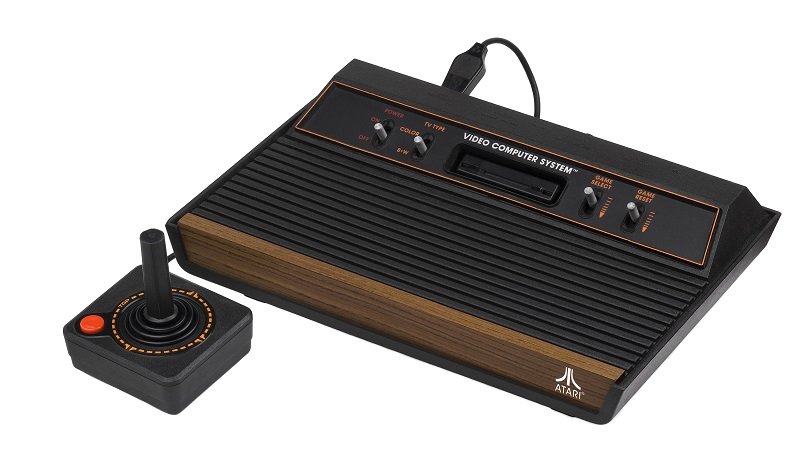
Now enter some familiar household names. Nintendo, Sega, and a slew of newly formed software houses eventually diminished Atari’s dominance. Competition is good right? Atari would limp on through the late 80’s and early 90’s branching out in to the home computer market while still keeping a foot in the door with the poorly designed Atari Jaguar, the eventual swansong of the once gaming king. Nintendo meanwhile released the Nintendo Entertainment System or NES with Robby the Robot and the popular Super Nintendo (or Famicom). Sega would release the Master System and the edgy Mega Drive (or Genesis). We also had the arrival of niche consoles such as the NeoGeo, PC-Engine (Turbographx-16), Panasonic 3DO, Philips CD-I and even the Commodore family that would go on to have success throughout the late 80’s and early 90’s.
These companies would eventually help shape what we see today as the modern console gaming industry. The arrival of Sony after a brief conceptual partnering with Nintendo on a CD based console add-on began with them entering the industry with the PlayStation in 1994 followed up by the ridiculously successful PlayStation 2 in 2000. Not long after, the mighty Microsoft would lay down its gaming intentions with the original Xbox in 2001 and Nintendo would do what they do best, keeping a laser focus on its own IPs with the Nintendo 64 and the GameCube. Sega meanwhile would bow out of the hardware race in 2002 after the untimely demise of both the Sega Saturn and the Sega Dreamcast thus setting the stage for the big three we now know and love Nintendo, Sony, and Microsoft.

I could go on referencing how Nintendo enabled Sony to enter the console market or how Atari could have played an ace card and potentially regained their momentum in the industry before Sony swooped in to buy its patents and technology rights (Sony acquires a lot of technology patents), but that’s another story.
The 90’s was also when the console market found its feet and made its way in to even more homes around the globe. These guys where on to something. As marketing got better and game designers tried to entice a broader userbase, games got more complex and a tad more violent. Ok well, a lot more violent. Rewinding back to the first age rating on a game in the UK (15), it was during 1984 and was a game called “Dracula Unbound”. It was available on a number of platforms but the best version was the Commodore 64. It had the best of the gory graphics and death scenes, look it up. But during the 90’s, Mortal Kombat landed and with it a ton of controversy surrounding its gory content. Sega and Nintendo went head to head with this multiplatform title with the edgy Sega version depicting red blood and the parent friendly Nintendo version having green blood. I’m sure they both had different ‘fatalities’? That’s one for the SNES Mini this evening.
Just an observation, the console as we know it today matured in the US but early on in gaming’s life, Europe was once ruled by the home computer. The ultimate 90’s kid was not complete without a Commodore Amiga, a Metallica t-shirt, and some denim. Me, I was in the Atari club, the Atari STe club to be exact because to me, the “e” stood for enhanced and thus it was better than the Amiga I told myself (it was Dave’s fault). The demo scene back in the day was putting out amazing Atari STe only demos I could show off to myself, all while the Amiga crew actually got games that leveraged their hardware. I’m still bitter to this day #atarirulez.
The Current State of Consoles
So let’s fast forward a few decades. I’ll try not to skip over too many important points.
The games console has now evolved. We’ve had the technological marvel of the Sony PS3, complete with Blu-Ray and its total lack of consideration for developers. I know, let’s put a completely new processor in this console, the best we can get our hands on, and let’s not bother with developing a mature set of tools to help developers design anything (IBM Cell processor). We’ve also had the Xbox 360, the generations golden child and a better success story than the Sony PS3 with Microsoft having a mature set of developer tools from early on in its life cycle thus positioning the Xbox 360 as the lead platform for almost all 3rd party developers that generation. Eventually both were very successful as the Sony PS3 and the Xbox 360 would go on to sell over 84+ million units. Oh and let’s not forget the Nintendo Wii and Wii U. This is where Nintendo really began innovating and doing their own thing with handhelds and motion controllers, but always keeping their laser sights on its own IPs. We all love Metroid right? 🙂 And it worked extremely well for them.
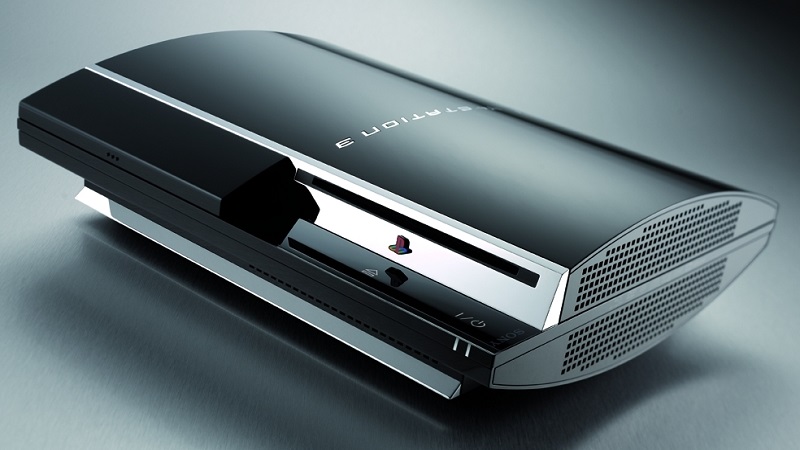
In the 90’s the games console experience was predominantly in your bedroom or your living-room playing single player games or split screen multiplayer titles. Goldeneye anyone? Sure Nintendo and Sega both dabbled with handhelds and the early concepts of connecting players over a network service. But with dial-up internet limiting the experience, it wouldn’t gain traction. The time wasn’t right and the technology wasn’t mature enough – yet.
It wouldn’t be until the Xbox 360 and later the Sony PS3 that games consoles would come to really leverage the use of the internet and a network service although both the original Xbox and even the PS2 started the ball rolling here. The Xbox 360 came to this party with the most mature network platform delivering party chat, downloadable games and bespoke DLC content for its users. Xbox Live was a little bit of the future in your hands back then. It was excellent. The Sony PS3 also had a network, PSN, but it was by no means as mature. It was however free, at least to begin with, but lacked many of the social features found on Xbox Live at the time. Enter the concept and delivery mechanism for the paywall, micro transactions, and other novel methods of generating new revenue streams network services enable. Both Sony and Microsoft developed their platforms with these new revenue stream principles embedded. In addition, higher speed internet connections have enabled games consoles to bring players together regardless of where they are in the world. The true multiplayer experience was born. But let’s be honest, multiplayer was born on that bastion of power the PC. But it gained mainstream popularity with the games consoles with titles like Call of Duty Modern Warfare and Gears of War just to name two.

The current generation, the Nintendo Switch, Xbox One, and PlayStation 4, are an evolution of what came before. The network features are more mature with a greater emphasis on delivering games directly via download and building better propositions to draw gamers to their platforms. Xbox Game Pass in particular has been a revelation for Microsoft. It’s a great model, tried and tested in the content streaming arena, but works really well for a games subscription service too. I can’t help but think Steam will turn on its own subscription service at some point, though it’s the complex licensing arrangements that hinder this type of model at times.
As it stands we now have the mature digital storefront with third party services available like Netflix, and a renewed focus on community and benefits such as early access, free games, and timed exclusives. Of course, that is as long as you are on the other side of that paywall. To add some perspective on the importance of the network, a 2019 study of the United Kingdom showed that 80% of all new games sales were digital downloads.
We’ve seen Sony’s PSnow platform slowly being introduced as Sony’s cloud based gaming service. PSnow is the result of buying digital interactive video streaming technology patents from Gaikai (2012) and later OnLive (2015). With these “strategic” acquisitions, did Sony attempt to hold off the future of the games console being a service, in particular a cloud based service? Or was it simply a purchase of technology IP to be used at a later date? Was the purchasing of both Gaikai and OnLive a way of protecting its hardware sales? In my opinion yes, it was the latter. Working for a telecom company that originally owned part of a games streaming service, I tried OnLive multiple times and it worked fine over my 8Mbps broadband with a ping of 30ms. With a resolution of 720p, it was a viable option even back in 2013. So let’s not beat around the bush here. The technology and ability to stream interactive video has been around for some time. What has been a big factor in its lack of adoption is down to a couple of factors – the network being the main limiting factor.
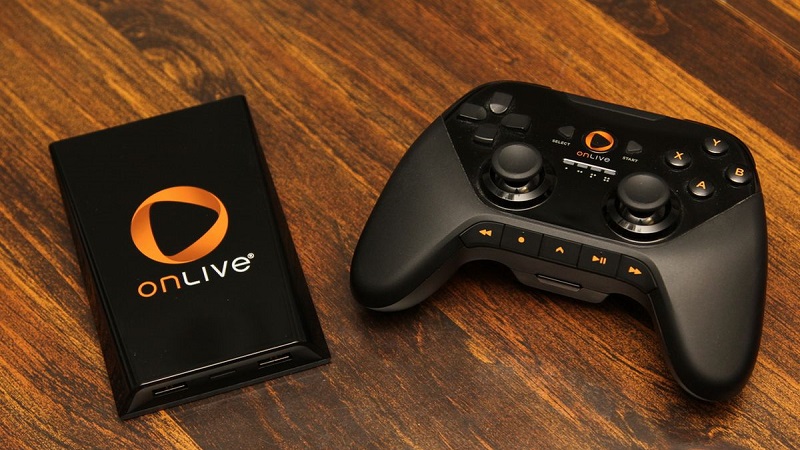
To enable a cloud based games console you need to have a high speed, low-latency internet connection. You also need to have a low-latency back-haul infrastructure and you need to have data centres close to the end-user. Enter AWS, Azure and Google. They all have solid infrastructure and a presence in most countries around the world. But it is also important to consider your existing content library.
Sony’s PSnow platform uses actual PS3 and PS4 hardware in a server blade form factor. This allows PS3 and PS4 titles to be streamed natively without much work from developers. This is something Sony will grow the capability of for the next generation focusing on the ability to stream games on multiple devices and empowering developers to easily scale content.
Microsoft have followed a similar path with Xcloud using native Xbox One hardware in a server blade form factor and leveraging advanced emulation software. However Microsoft have also gone a step further and developed a dedicated tool set to help developers stream content to multiple devices i.e. phones, tablets, and PC’s, thus scaling text and input mechanisms as required. They have developed these tools very early on in designing the platform and this could help them going forward. This generation has also seen an unlikely partnership between Sony and Microsoft in terms of the Azure cloud services, and more importantly, to Sony Azure’s back-haul infrastructure and global presence. Sony previously used AWS network infrastructure before 2012 but after numerous performance problems and a catastrophic data breach, they moved some services to RackSpace.

I’m just going to put this out there: Xbox live’s performance as a network service has been much more robust and stable than Sony’s PSN from the beginning. Sony are not a company which delivers cloud services other than PSN. They simply don’t have that scale of infrastructure. Even purchasing Gaikai and OnLive (who didn’t have their own dedicated infrastructure to begin with) did not add any benefit in this area. Although the acquisitions of the aforementioned companies did have big future benefits as previously stated. So this partnership is in principle a “memorandum of understanding” and to that end it’s mutually beneficial.
The relationship around Azure doesn’t solely surround both Sony’s and Microsoft’s gaming entertainment divisions, it has wider implications. I want to also make it clear that Azure is not Xbox Live nor xCloud. It’s sometimes a common misconception as they are all Microsoft products. Azure is a suite of compute, data, and infrastructure products designed predominantly for business customers to use (i.e. Office 365, cloud compute, and cloud storage). Xbox live, xCloud, and eventually PSnow (and possibly PSN) will be delivered over this infrastructure. It’s a win-win for both companies. Microsoft gains a big name using their Azure infrastructure along with access to specialized optics tech. Sony meanwhile gains the ability to deliver its products over a dedicated, purpose built cloud network with the added benefit of future collaboration for both. This must be music to developer’s ears as the back-end network for both platforms could eventually be the same environment thus simplifying crossplay and network features. But let’s cut to the chase, this partnership has come about in part because of two reasons; Google and Amazon. We will get to that shortly.
Let’s first take a look at some of the raw numbers and statistics behind the current generation. This will set the scene for the incoming new generation of consoles and services. Disclaimer, I really have no preference when it comes to which platform I play games on. I’m lucky enough to have all the consoles from the current generation. It’s really the games that dictate what I end up booting up, or my kids.
When it comes to sales, yes I said it, sales… Sony have sold more PS4s (Base and Pro models) than both Microsoft (base, S, and X models) and Nintendo (Switch) combined. It’s a stark reminder that getting a consumer message right pays off. I am of course referring to Microsoft’s mixed messages when unveiling the Xbox One. In retrospect, I can see what Microsoft was trying to achieve so allow me to elaborate.
Microsoft made a play for the living-room by positioning its new product as predominantly a service delivery platform; always connected, watch/pause live TV, Skype your friends, listen to your music, watch Netflix, all while talking and waving your hands frantically at your new Xbox One and advanced Kinect. Selected services could have sat behind a paywall and generated additional revenue for Microsoft with companies like HBO and Fox potentially reaching more subscribers if the adoption was high. Yes, the games played almost second fiddle to the media functionality of the console, the message was distorted, and all while you had an audience at E3 2013 who was there for one thing; the games. Microsoft also wanted to tackle the annoying resale games market by deploying a DRM feature that was to lock physical media to a single Xbox One console. This was done in part to sure up support from the third party developer community, but it backfired drastically and Sony was in the right place at the right time to capitalise on the disastrous launch event. Sony quickly jumped on the consumer backlash and even mocked the DRM functionality on social media.

Nevertheless a tone was set and the Xbox One never really recovered, even after acting on customer feedback within weeks of the reveal. To top this off the focus on the Xbox one’s media functionality seemed to have impacted its design. At launch it was out gunned by a games first orientated PS4 and later the PS4 Pro. But not to be out done, Microsoft remedied this position with the release of the amazing Xbox One X; the current king of the hill and power crown holder. It’s a truly exceptional piece of kit with a 4k blu-ray player to boot, something Sony was heavily criticised for after releasing the PS4 Pro without one.
Nintendo on the other hand have stepped out-of-sync with both Sony and Microsoft. Their approach has been to innovate the gaming experience over the last decade and have had a lot of success. Again Nintendo have a focus on pushing their first party content and this has been of some concern to the industry. First off, content doesn’t always sell a platform on its own unless you have first party software that changes with trends in the market place. This is where Nintendo stumbled a little. But with persistence, and making a play for the casual gaming market, they have seen a resurgence of late. The Nintendo Switch is perfect for the gamer on the go who likes Nintendo games and that unique experience offered, but it’s a different experience to what Sony and Microsoft have to offer. And that’s a good thing. Sure Sony made a play for the same market with the PS Vita but again, like the Xbox One, from very early on in the PS Vita’s life cycle the message was distorted and it never really hit the ground running. I purchased one purely for remote play and while I can honestly say I’ve only used it a handful of times, that’s not to say it didn’t have its supporters and a tone of good content as well.
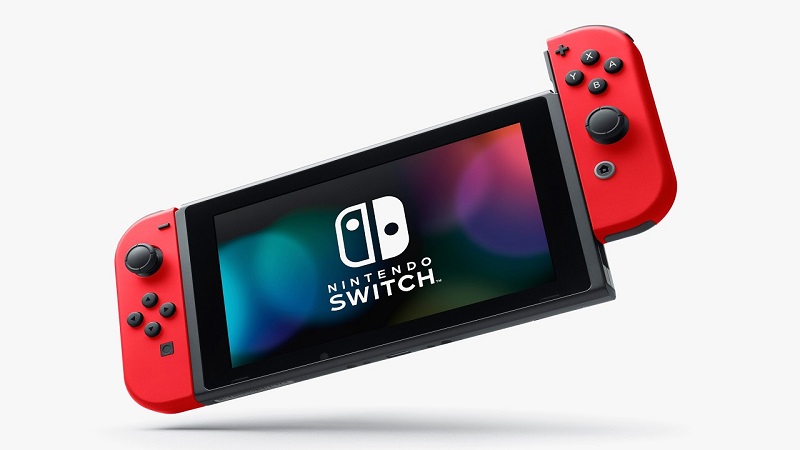
Gaming Networks in 2020
Now let’s look at how the network services are doing for each of the big three; PSN, Xbox Live and Nintendo Online. Again this is relevant to setting the scene for the new generation. According to Push Square, PSN has over 94 million active users, with 90% of them accessing the service regularly over the last 12 months. That’s PS3, PS4 and PS Vita. PlayStation Plus subscription is at 36 million as of this writing. Sony’s cloud gaming offering PSnow had some 700,000 subscribers in the third quarter of 2019 and sat with a 51% share of the total gaming subscription services user base. With the recent price drop in October 2019, PSnow sits at 1 million subscribers. Let’s put that into perspective though. That equates to less than 1% of Sony’s PS4 install base and less than 2% of its PlayStation Plus subscribers. Regardless, Sony’s PSN and PSnow alone generated a whopping $12.5 billion for the fiscal year 2018 which is more than Microsoft’s entire gaming division for the same period. Sony’s gaming division as a whole saw revenue of $17.7 billion for the same period. You can begin to see the importance of Sony’s partnership with Microsoft and adoption of the Azure platform; Sony simply can’t scale to meet demand currently.
For Microsoft and the Xbox Live platform, they boast 67 million active users across Xbox 360, Xbox One and Windows 10 PC’s, but it’s not disclosed how many of that 67 million are Xbox Live Gold members. Within the annual report no split is given for the base. The fiscal year 2018 was Microsoft’s most profitable year ever for its Xbox gaming division with a record $10.5 billion. This figure includes service, software, and hardware sales.
As for Nintendo, the Switch has helped the company return to form with an impressive $9.7 billion in revenue for the fiscal year 2018. This figure also includes both hardware and software sales.
To summarise the above revenues, the networks and their services have never been so important to a console manufacturer. We have recently seen the big three release their latest financials and as you might predict, both Sony and Microsoft are seeing sales fatigue across the board at the end of this generation. We’re all waiting for the next generation to start.
Back to the Future
We recently saw the first unveiling of the shiny new Xbox Series X from Microsoft. In terms of design, it’s a stark departure from the traditional look of a home console. I quite like it. It’s a mini PC tower form factor. The only down side is, where do I put it in my living room? In terms of the XSX specs, it’s going to be a beast sporting a custom AMD Zen2 CPU and Navi GPU with all the bells and ray-tracing whistles. Microsoft are very confident in their approach this generation. It’s great to see and only bodes well for gamers.
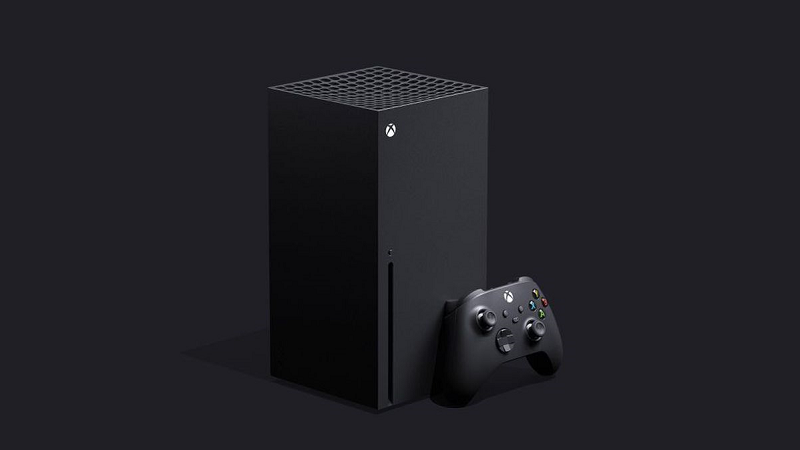
As for Sony they are following some sort of PR experiment, or at least it certainly seems that way. If you’re a bit of a data freak like me you might run a google trends search from time to time just to see how the PS5 narrative is doing from a marketing perspective. And you know what, it’s working. The conversation of why Sony hasn’t shown its hand dominates social media and that’s the plan it would seem. Have we seen lots of PS5 leaks or are they social marketing exercises? Either way, it’s effective. As for the rumoured PS5 specs again it’s all AMD, very powerful, very fast, very 3D audio, haptic feedback triggers yada yada. In all seriousness, I doubt we will see a huge gulf between the two.
We hear a lot about teraflops these days and I’d like to frame this measurement for reference. The PS3’s GPU was rated at 230.4 gigaflops while the Xbox 360’s GPU was rated at 240 gigaflops. So on paper the Xbox 360 should have had the best looking games. And if we’re honest, in terms of 3rd party content it did. But if we look at what a dedicated team can do who specialise in the nuances of that particular closed platform, you start to see just how important first party game developers are with the likes of the Uncharted Series and God of War on the PS3. With that in mind, spare a thought for those first party PS3 developers who had to build their own tools to leverage the hardware and tame the Cell Processor. Crunch!
Now it’s time to speculate on the future of gaming with an educated view of what’s to come; taking into consideration the current posture of the big three, the streaming technologies on the horizon, and how networking will evolve in the short term.
Microsoft has recently announced that Xbox Game Studio games will soon be available on Steam. This isn’t a surprising move all things considered. Steam has around 18.5 million concurrent users, 47 million daily users and 90 million monthly users on its platform. The vast majority being PC users with a small number of Linux and Mac OSX hidden in the numbers above. That’s some install base to sell your software to bearing in mind you have just invested in your 1st party games studios, and have invested heavily in advanced software emulation on x86 architecture (you can likely see where this is going). Anyway I digress. As I’ve stated above I’m taking a factual look at the posture of the gaming industry. I’m not a fanboy and I’d like to think I take an agnostic approach to the contents of this article.

So what will the future of gaming look like? In short the future of gaming is streaming content and I know for the console purists this is a bitter pill to swallow. But looking at the playing field logically it will hopefully make sense so stick with me here. Hell, you could even take this a step further if you wanted to. The technology exits now that would empower game developers to go direct to market and bypass the console all together. Think about that for a minute. You just stream your games direct from the studio because they have rented a cloud service from the likes of AWS, Azure or Google and published their own content on their own digital store front.
OK, back in the room. The traditional hardware cycle really does serve a purpose. Once a market reaches saturation and sales of consoles start to tail off, introducing the concept of the next generation is like pressing the reset button. You are able to refresh your hardware sales again and also update to the latest silicon to deliver new experiences to your customer base. Although the last two generations have seen incremental advances in resolution and graphical fidelity, we have also seen telling signs of an alignment in architecture. This is an important development. As recently as the Xbox 360 and the Sony PS3, system architecture was fundamentally different.
The Xbox 360 used an IBM Power PC Xenon CPU and a separate ATI Xenos GPU while memory was a shared pool of 512Mb (and 10Mb of eDRAM). The Sony PS3 on the other hand had an IBM Cell Processor (7 SPU’s) with the addition of a single core IBM Power PC CPU and a separate Nvidia RSX GPU while memory was split between CPU and GPU 256Mb each. These systems where fundamentally different. Looking at this from a developer’s perspective, I’d need to create two work streams; one for the Xbox 360 and the other for the Sony PS3. There would be few opportunities to consolidate work streams due to the nature of each machine. Graphics engines, in-game assets, and memory utilisation would be drastically different for each workflow. This difference in architectures ultimately translated into additional development costs being incurred. This also drove behaviour, with developers picking the system with the best tools and thus naturally becoming the lead platform. In this case it was the Xbox 360. It was by far the easiest platform to develop for unlike the Sony PS3 with its Cell Processor; which even with today’s advancements in software emulation is extremely difficult to emulate.

Fast forward to 2013 and both Microsoft and Sony did their due diligence and listened to the developer community. They both partnered with AMD and both opted for a system on a chip design with a combined CPU/GPU (x86 architecture, essentially a custom PC build) coupled with a shared memory pool of 8Gb. Both the Xbox One and the Sony PS4 are very similar in architecture. Sure, there are subtle differences embedded in chip variation and different types of memory being used, but at their core both consoles are x86 and with that brings big benefits to developers. Work streams can be consolidated for PC and console, development costs can be reduced, and product quality can be improved. Tool sets can be shared between platforms and the development life cycle becomes much more simplified. While the costs of AAA games still remain the same and in some cases even more expensive, the cost of development has greatly reduced meaning a better ROI. In short the gaming entertainment machine just got more efficient at making money for its investors. Profit has always been the real driver for innovation even in the gaming sector. So where is all this leading us?
Here in the UK we recently launched our 5G mobile network and it’s going to see a fast roll out across the country. Also as it stands now, super fast fibre internet is available for over 95% of the country. We are seeing a steep rise in the use of hosted services, from on-demand TV, cloud based applications like Office 365, mobile banking and many more. The modern network infrastructure has matured enough on the whole to be the bedrock for the next generation service models and IoT. Networks or more importantly ISP’s now deliver access to the internet with very low latency. My fibre connection at home provides me with 45mbps download and 8Mbps upload with a network latency (ping) of just 28ms and that’s typical for my area. Meanwhile, 5G in my area will provide me with 400Mbps download and 100Mbps upload with a network latency similar to that of my fixed connection, thus making a hosted games console viable. Both Microsoft and Sony are investing in streaming technology and advanced software emulation. Nintendo is also making strategic moves in the hosted console space as well. So this next generation will be very interesting, and quite possibly the last generation for physical hardware, at least as we know it.
I don’t want to labour too much on the new Xbox Series X or the Sony PS5. But what I will say is that they will be very similar in architecture and both will sport very similar UPS’s in Ray Tracing and other video scaling enhancements. But again, at their core they will both be x86 making them easy to develop for. However, we might see the first iterations of hardware within these machines dedicated to reducing input lag from an interactive video stream, or what we refer to as edge console computing. What do I mean by this?
The traditional hosted games console is setup in a way where you have your dedicated hardware (Xcloud / PSnow) in a data centre (Azure) and then stream your efficiently encoded video and two way input data to your device of choice. The video is then decoded and a session is established to take care of the input (i.e controls). This method is very sensitive to network conditions and low latency is king. Where edge console computing will differ will be in both what is computed in the data centre and what is computed on a local device. As an example as it relates to graphics rendering, all textures and the general game world environmental data such as NCP’s, weather, and multiplayer sessions, can take place in the cloud. Meanwhile collision detection, audio mapping, and some physics calculations can take place on a local piece of hardware. Think of how Microsoft tried to spin how the new Crackdown was to play out (it’s not a new thing). Moving to a combination of cloud and edge computing leverages benefits of further reduced latency, input lag, and more importantly the cost of developing new hardware is reduced as the costly components would reside in the cloud. Properly implemented, even twitch shooters like Call of Duty would work just as players expect. This is eventually what both Microsoft and Sony might have in mind for xCloud and PSnow, and it’s not a bad thing at all. Sure the draw to either platform will be its first party content, but as it stands I think there is room for two or three big gaming service providers. So what about Google and Amazon?
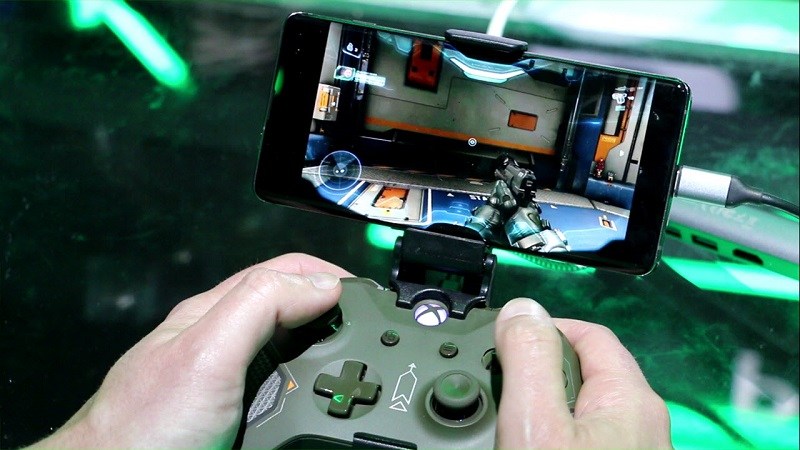
Google has already made its intentions known with Stadia and it’s no slouch in the specs department. It can even flex up beyond the touted 10.7 teraflops shown at its reveal. Like both Sony and Microsoft, Google have partnered with AMD (seeing a theme here) to develop their dedicated piece of hardware that will sit in a state of the art data centre. They are also going to seamlessly incorporate Stadia in to their existing YouTube platform and leverage the community interaction. It will no doubt benefit from those integrations, however where Stadia will struggle is in its games catalogue. It doesn’t have a back catalogue like Xbox or Sony for it to lean on. Google does however have intentions to setup and develop first party content and this will help it create its own identity in the market place. They also have enlisted support from the major software companies like Epic, Ubisoft and more. Stadia also includes its own dedicated controller that connects to your local network directly. It’s a novel take on reducing input lag and you could see this as an iteration of edge console computing. The future could be quite bright for Stadia if it can ride the wave of 5G, but like any streaming game service you do need a good internet connection to make it viable.
Now we come to Amazon, the dark horse in all of this. Amazon have quietly been positioning themselves to enter the gaming industry. They own the popular video streaming service Twitch and they currently have their own graphics engine derived from the powerful CryEngine called Lumberyard. Lumberyard has been around for 3 years but can be used for PC, console and other streaming technologies. It’s also native to the AWS platform. On top of this, Amazon also has their own games studio that has released games on both the Xbox One and PS4. They have all the pieces set to enter the gaming industry even down to a strong relationship with AMD who they’ve partnered with for high spec cloud computing. It’s all just a question of when will they enter with their own platform, not if. Stay tuned. I think it’s safe to say when Amazon enters the gaming industry with their own offering it will be with a streaming service, but it remains to be seen if they will take the concept of edge gaming computing to the next level.

What is interesting, is the use of dedicated gaming hardware in these new cloud setups like Xcloud, PSnow and Stadia. Profit will once again drive a technology change here too. Why have dedicated hardware when you can consolidate a computing stack that, in combination with edge computing, can deliver a top tier gaming experience to a user? In doing so it allows these companies to re-purpose the hardware to perform tasks in parallel like streaming your favourite show or rendering a CAD design for an architect. In this future, the Xbox, PlayStation, and Nintendo brands are a service delivered over a combination of cloud and edge computing. We’ve seen the first steps in this direction taken by Microsoft and it’s only a matter of time until Sony and Nintendo follow suit.
Ultimately moving to a cloud oriented future does offer some significant benefits to the gamer. Scale is the first. Game worlds can be vast, detailed and shared and it’s fun to imagine seeing shared worlds with the big three. Most cloud architecture will leverage advanced SSD technology so loading sessions and streaming game assets in to an open world would be greatly improved. Updates and multiplayer sessions would also see benefits. The local download of large files would be a thing of the past and multiplayer session could possibly share network infrastructure that would make crossplay the norm for third party titles.
The big glaring reason that companies might look to move from a hardware position to a consumable service is cost. Saving on manufacturing costs and all the logistics involved would make a huge impact to overall profit margins, not to mention providing more control over your IP and reducing piracy. These benefits also extend to the developers i.e. a reduction in distribution and logistics costs, and the ability to update your content in mass.
If you’re a gamer, at the end of the day it’s the experience and first party content that draws you to your platform of choice. Is it really that box under your TV? Or is it the experience on that TV, tablet, or mobile device which defines a console generation? Half-Life Alyx in VR anyone? Let’s hope the focus shifts from hardware to something that really matters; the games. I think we are starting to see this change in focus. Microsoft have taken the first risky steps and the likes of Sony and Nintendo are positioning themselves for a similar journey with slightly different strategies. Gaming’s future is bright. It’s streaming.
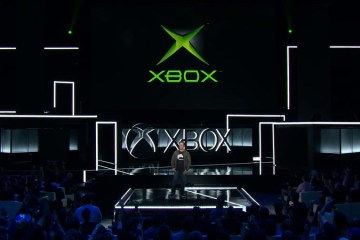


[…] my generation, gaming stuck as a hobby into my adulthood. If you’ve read my previous article “A Brief History of the Console and the Future of Gaming” you can tell I’m not biased. I find the gaming industry and the technologies that drive […]